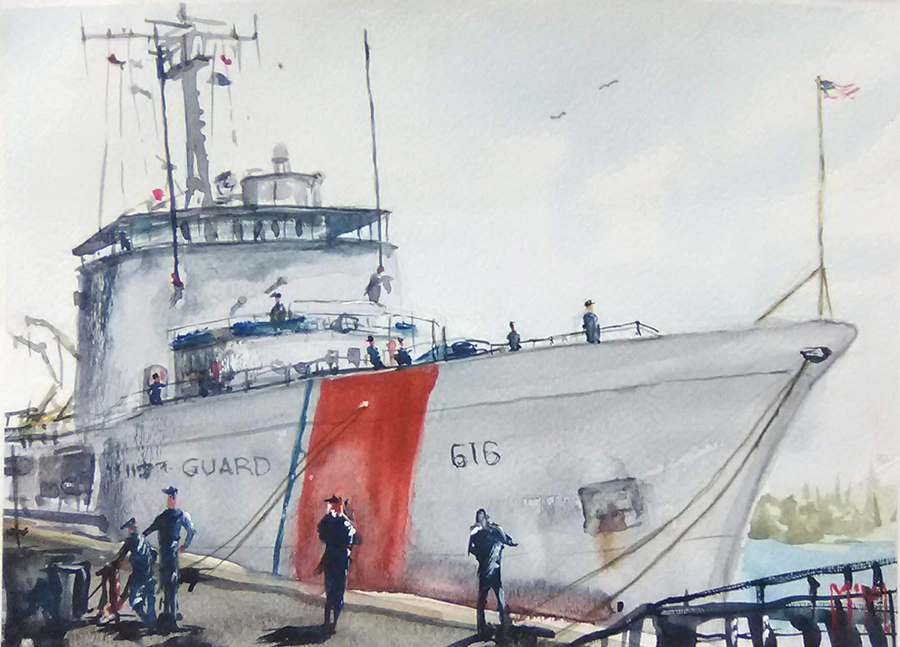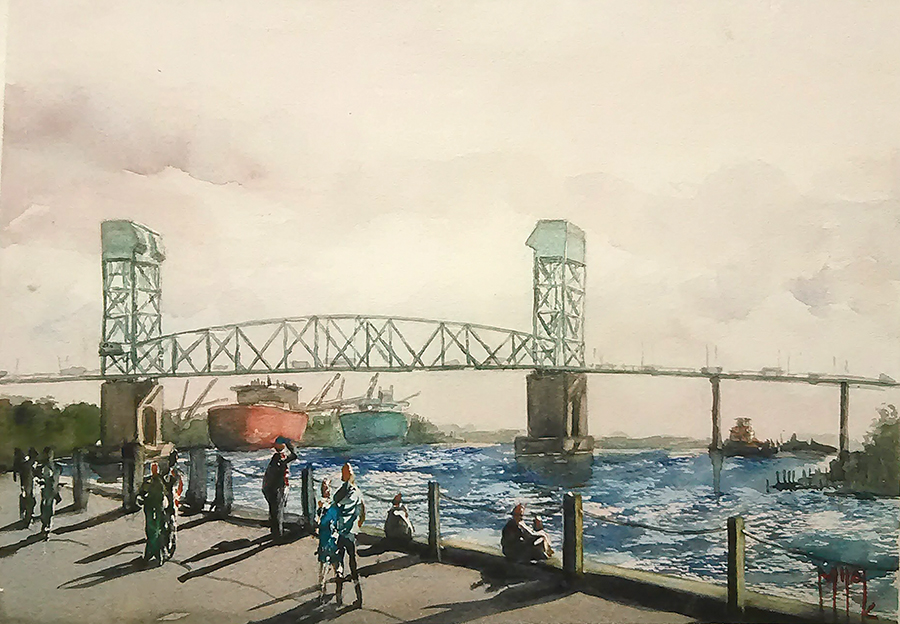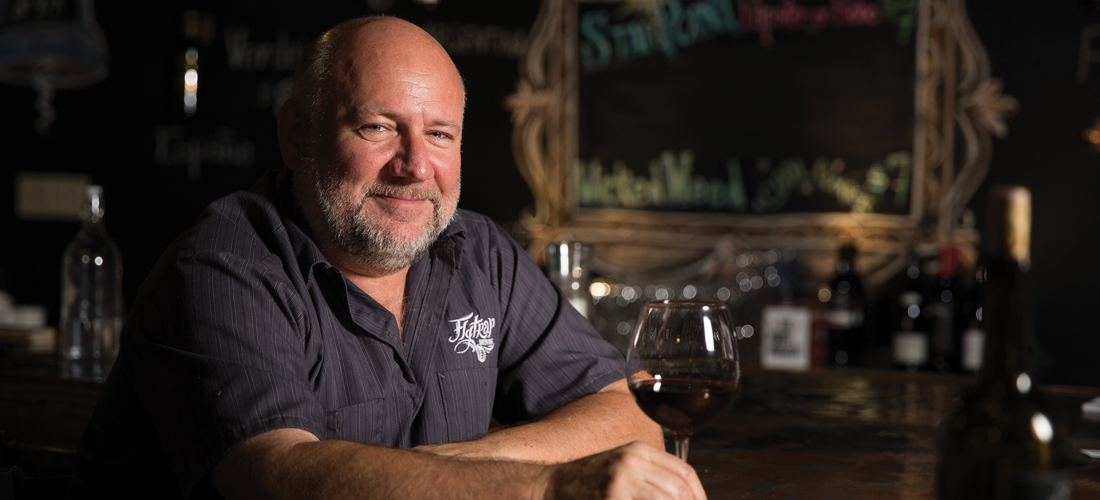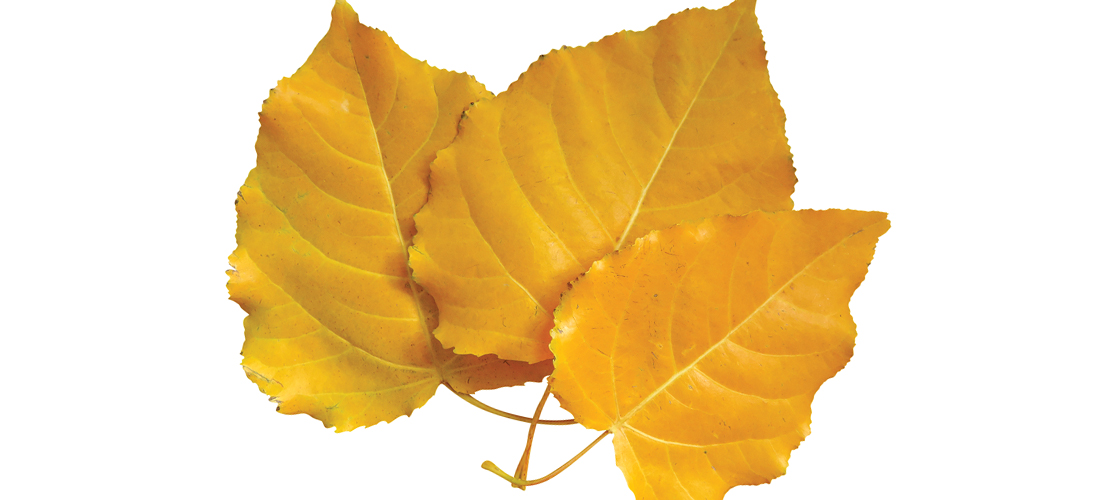Love and Fate
The Port City revealed through the work of artist Nick Mijak
By John Wolfe
It would be easy to imagine him, easel and palette and brushes and all, at the base of the Sacre-Cœur basilica in Paris, overlooking the wide spread of the city as it unfolds there like a present on Christmas morning. Or perhaps Venice — on a high stone bridge in the setting sunlight, with the gondoliers sculling their vessels on the canals below. He certainly has the craft to capture these exquisite vistas on cold-pressed paper. But instead, Nick Mijak chooses subjects more familiar, but no less complex and varied: the river that pulses through the heart of the town, the battleship monument to those who fell in war, the distinctive silhouette of the Memorial Bridge. The buildings and people, the shadows and light, the rain and sunsets of the Port City.

Love or fate — he’s not sure which — brought him here from Nowhere, Northern Michigan (“the land that time forgot,” he quips), living a Bohemian dream with a girl who painted with words. When she moved back to Detroit, he remained behind with his dream of painting full-time — a dream he’s been living now for the past five years. Growing up, he wanted to be a cartoonist, his heroes Schultz and Breathed, but a Monet exhibit at the Chicago Museum of Art shifted his focus. In his early 20s, he found work as a draftsman, a trade that gave him the discipline and work ethic necessary to paint.

Mijak, who is self-taught, paints en plein air — outside in the world, surrounded by “the atmosphere and reality I live in.” He works almost exclusively in watercolors, a medium he thinks of as a language he’s learning to speak. Out there, his audience can watch him work, or buy a painting from him directly. Children often stop to observe. They’re the best, he says. Perhaps, one day, they too will learn to paint. Mijak hopes also to kindle enthusiasm for his craft in those who have never picked up a brush, or who used to but, for life’s myriad reasons, haven’t painted in years. “I’d like to think I’m inspiring people,” he says.

His work is rooted in the Impressionist tradition of painters like Claude Monet, Vincent van Gogh and John Singer Sargent (who mostly painted portraits of high society, but also laid some stunning scenes on canvas). What he is trying to capture is not the objects that he paints themselves, but the atmosphere that surrounds them — the feeling of being in that moment.
“If I’m painting Front Street,” he explains, “the buildings don’t change. It’s always the same scene if you’re only looking at the buildings. But if you start to notice the shadows, or the color of the sky, or if there’s rain coming in, or it’s wet or it’s dark or it’s morning . . . those elements are always changing. For me, those are the elements that make a painting interesting. That’s what gives it a mood, an atmosphere, a feeling. If you look at a painting and feel evening coming, or a storm coming, that’s what I try to capture. The atmosphere is the subject matter.”
John Wolfe studied creative writing at UNCW. He can be found online at thewriterjohnwolfe.com.


